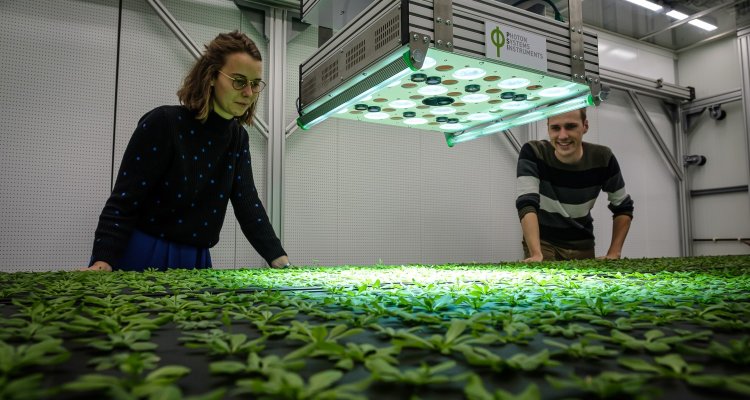
Project
Non-photochemical quenching in higher plant photosynthesis
This project aims to increase our understanding of the rate at which Arabidopsis thaliana plants adapt and protect themselves against changes in light intensity. The mechanisms of interest all affect the light dependent photosynthesis. Increasing our understanding of these mechanisms will lead to insights on how to increase photosynthesis efficiency and consequentially yield.
Background
Plants are constantly exposed to changing environments, which they need to adapt to. A plant that is able to rapidly adapt to these changes, is a plant that will perform better than its neighbors.
Photosynthesis is the process through which light energy from the sun is fixed into chemical energy in the form of carbohydrates. This occurs in two steps: a light reaction and a subsequent dark reaction. Without photosynthesis, life on earth would be completely different from what it is now.
In the light reaction of photosynthesis, adaptability is (partly) regulated in the chloroplast through a mechanism called non-photochemical quenching (NPQ). NPQ protects a plant against photodamage caused by changes in light intensity. Research has shown that there are many different ways NPQ can be induced and inhibited. These different mechanisms can be studied and quantified by measuring chlorophyll fluorescence and changes in absorption spectra of photosynthetic proteins. On a genetic level we find that there is quite some natural variation present for the rate of NPQ. Upon identifying this natural variation in plants, it can be used to breed for more robust crops with higher biomass or yield.
Project description
For my PhD research on the identification and characterization of natural genetic variation for NPQ, I focus on three experimental approaches:
- Genomic Selection and breeding for increased fast NPQ rate in the A. thaliana AMPRIL population. The AMPRIL population is a magic population consisting of 871 (mostly homozygous) individuals, which are all progeny from the same 8 parents. NPQ rate is and will be measured using the Phenovator
- II and NPEC facilities for high-throughput screening of the plants.
- Further characterization of a candidate gene causing more Cyclic Electron flow in a natural accession
- Further characterization of candidate genes underlying quantitative trait loci (QTLs) in fast NPQ responses in a doubled haploid population of A. thaliana.
Publications
- Tom P J M Theeuwen, Louise L Logie, Jeremy Harbinson, Mark G M Aarts (2022), Genetics as a key to improving crop photosynthesis, Journal of Experimental Botany, Volume 73 (Issue 10), Pages 3122-3137, https://doi.org/10.1093/jxb/erac076
- Theeuwen et al (2022), Plethora of QTLs found in Arabidopsis thaliana reveals complexity of genetic variation for photosynthesis in dynamic light conditions, BioRxiv, https://doi.org/10.1101/2022.11.13.516256